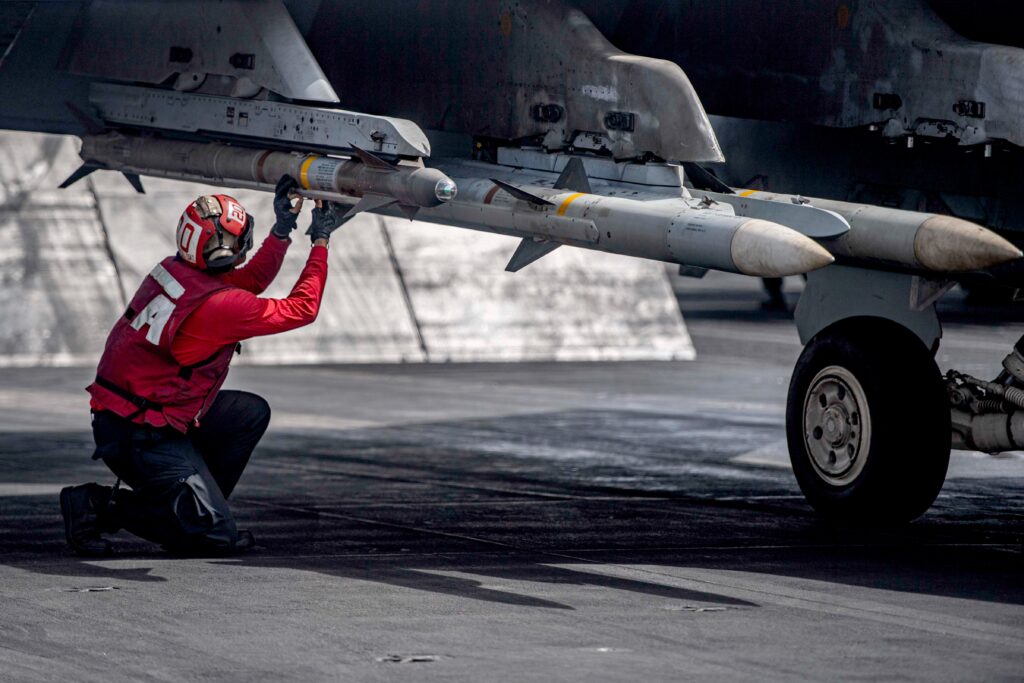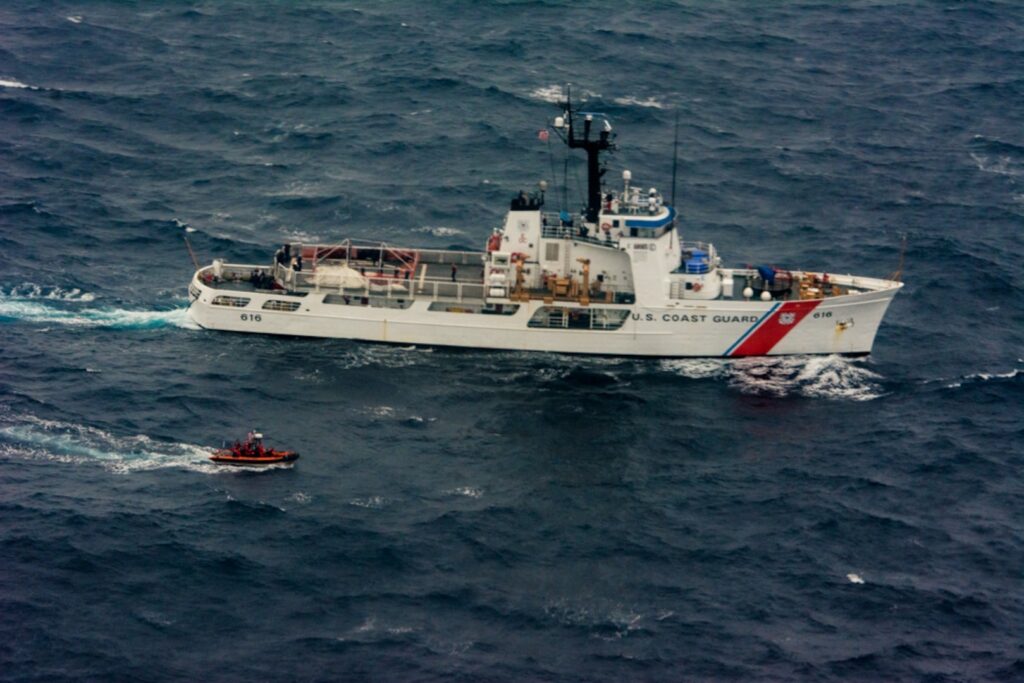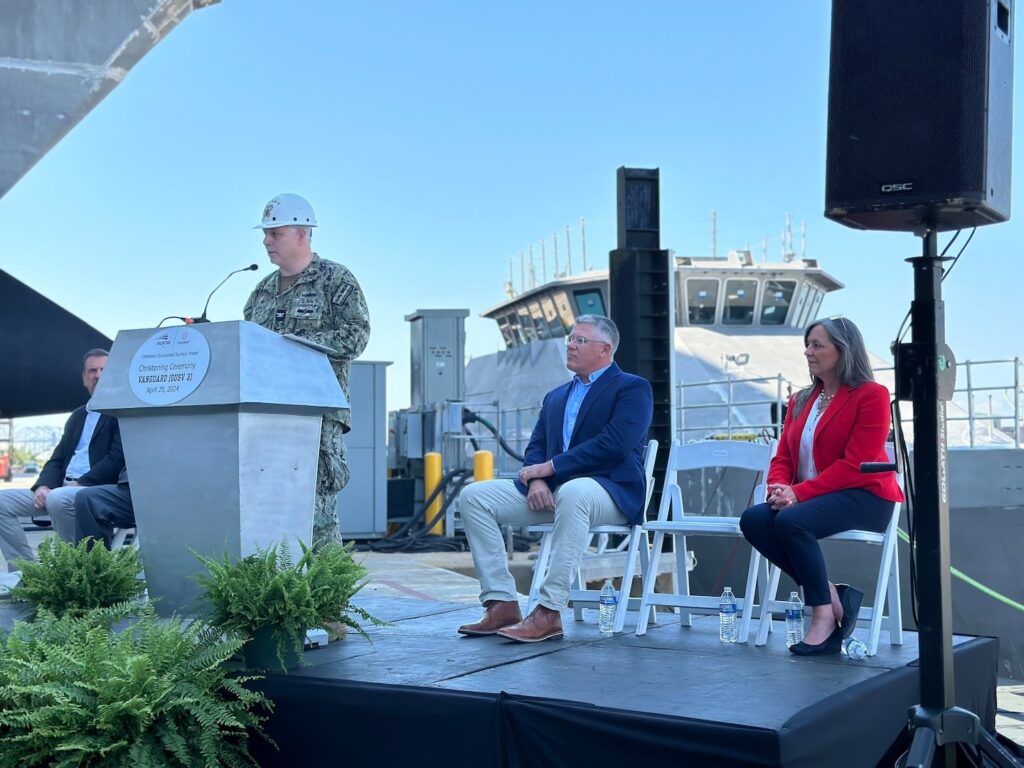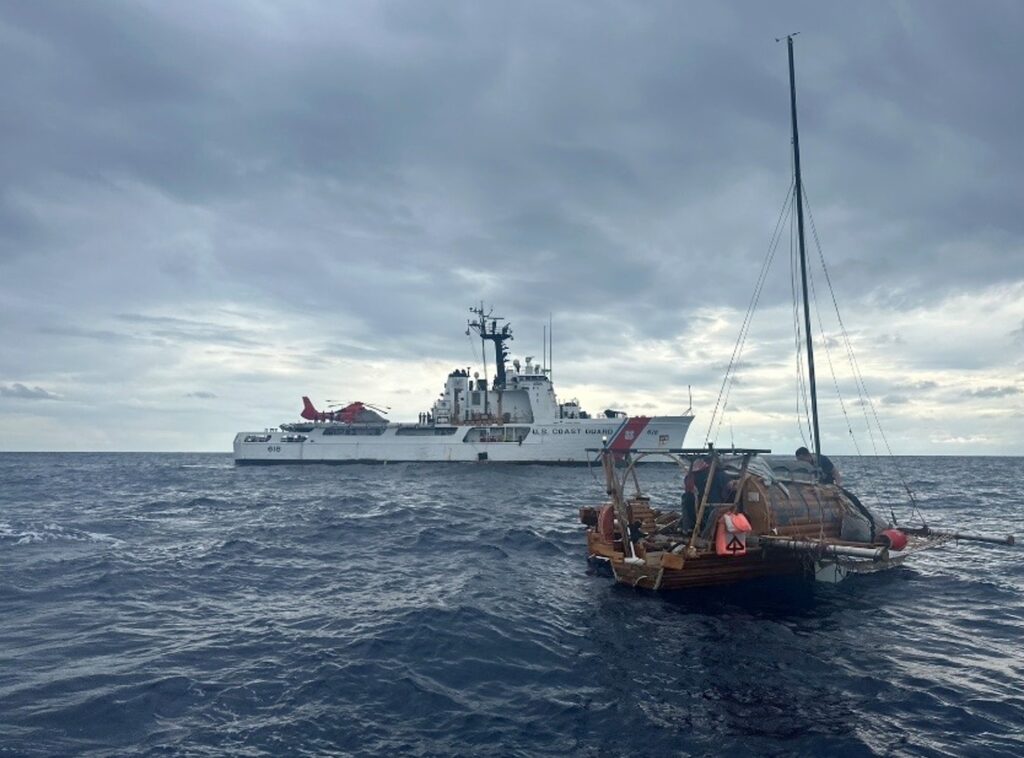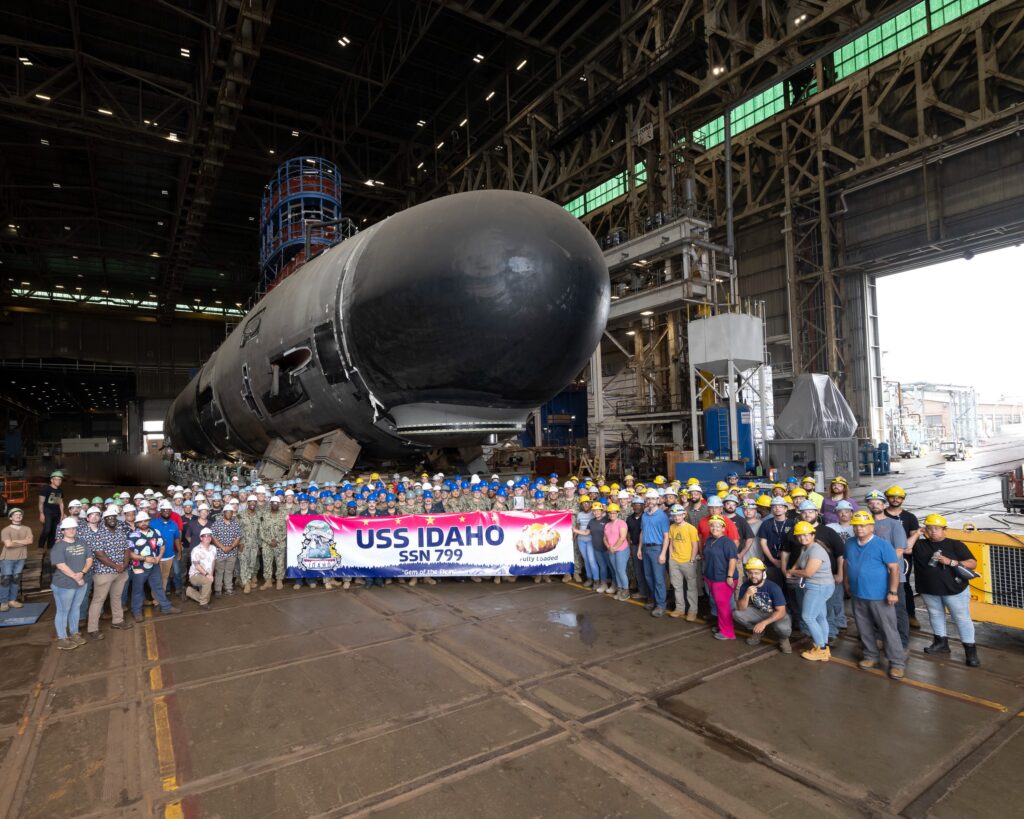NOAA Breaks Ground on New Marine Operations Center Facility in Newport, Rhode Island
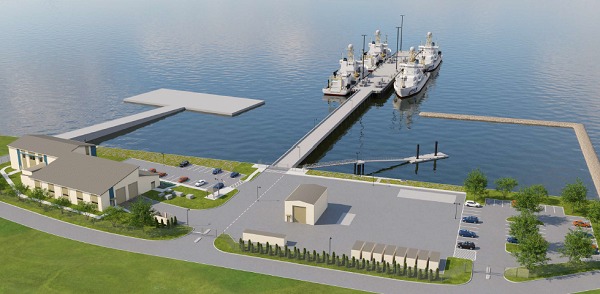
By Keeley Belva, NOAA, May 6, 2024
Today, the Department of Commerce’s National Oceanic and Atmospheric Administration (NOAA) held a groundbreaking ceremony for a new facility on Naval Station Newport in Rhode Island that will serve as the future home of the NOAA Marine Operations Center-Atlantic.
In December, the U.S. Navy, on behalf of NOAA, awarded $146,778,932 to Skanska USA to build the new NOAA facility. The design and construction of the facility is funded in part by the Inflation Reduction Act, the largest climate investment in history, as part of President Biden’s Investing in America agenda.
The facility will include a pier to accommodate four large vessels, a floating dock for smaller vessels, space for vessel repairs and parking and a building to be used for shoreside support and as a warehouse. Construction is anticipated to be completed in 2027. This project will operate under a Project Labor Agreement, consistent with EO 14063, issued by President Biden.
“Thanks to the leadership of President Biden and the hard work of Rhode Island’s elected leaders we are making transformative investments in Rhode Island and all across the country,” said U.S. Secretary of Commerce Gina Raimondo. “President Biden’s Investing in America Agenda made it possible for NOAA to construct this new facility and make advances in critical climate and ocean research, while also cementing NOAA’s relationships with the Navy and the community of Newport. This facility will support science and a healthy economy well into the future.
“I’m proud to say that this new facility has been designed to take future changes in our climate into consideration,” said NOAA Administrator Rick Spinrad, Ph.D.. “It will be LEED certified and will soon be the homeport for one of our newest, lower-emissions vessels, working towards the goal to minimize NOAA’s own impact on the environment.”
“The new, state-of-the-art Marine Operations Center-Atlantic facility is critical to NOAA’s mission and delivering on our commitments to regional, international and other diverse partners,” said NOAA Corps Rear Admiral Nancy Hann, Director of the NOAA Commissioned Officer Corps and NOAA Marine and Aviation Operations. “Newport has always been a welcoming community to NOAA, and we are appreciative of the support from local, state and congressional leaders, as well as our mission partners at Naval Station Newport.”
NOAA’s fleet of 15 research and survey ships are operated, managed and maintained by NOAA Marine and Aviation Operations. Ranging from large oceanographic research vessels capable of exploring the world’s deepest ocean, to smaller ships responsible for charting the shallow bays and inlets of the U.S., the fleet supports a wide range of marine activities, including fisheries surveys, nautical charting and ocean and climate studies. NOAA ships are operated by NOAA Corps officers and civilian professional mariners.
“NOAA is the top scientific weather and oceans agency and I was pleased to help Rhode Island land MOC-A. Naval Station Newport’s location and the years of strategic federal investments we’ve made here are really paying off. Bringing NOAA’s premiere research fleet and Atlantic operations center to the Ocean State means hundreds of jobs for Rhode Island and a brighter future for our Blue Economy,” said Senator Jack Reed.
“I am very pleased to celebrate the groundbreaking of NOAA’s new Atlantic Marine Operations Center right here in Rhode Island. The research conducted here will help us better understand the effects of climate change on the oceans and support job growth for years to come,” said Senator Sheldon Whitehouse. “This day would not have been possible without Senator Reed’s longtime dedication to relocating the Center to the Ocean State.”
“The National Oceanic and Atmospheric Administration’s growing footprint in the Ocean State will be a massive jobs and economy boon for years to come,” said Congressman Gabe Amo.
“The work to construct and staff the Marine Operations Center-Atlantic, right here on Naval
Station Newport, will improve our national security — and non-military — operations. I am
grateful for the leadership of Senators Jack Reed and Sheldon Whitehouse, Secretary Gina
Raimondo, and all our state and local partners here today to break ground on new climate-
resilient infrastructure that continues Rhode Island’s fight against climate change.”
“Rhode Island is proud to be selected as the home of the new NOAA Marine Operations Center-Atlantic,” said Governor Dan McKee. “This facility will bolster our efforts to build climate-resilient infrastructure and support our blue economy. We’re grateful to President Biden, Secretary Raimondo and our congressional delegation for their support of this project which will put Rhode Islanders to work in good-paying jobs and pay dividends for generations to come.”
